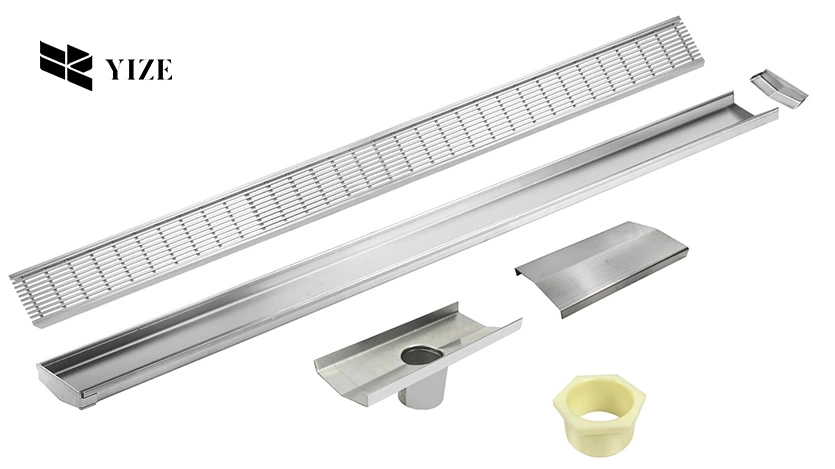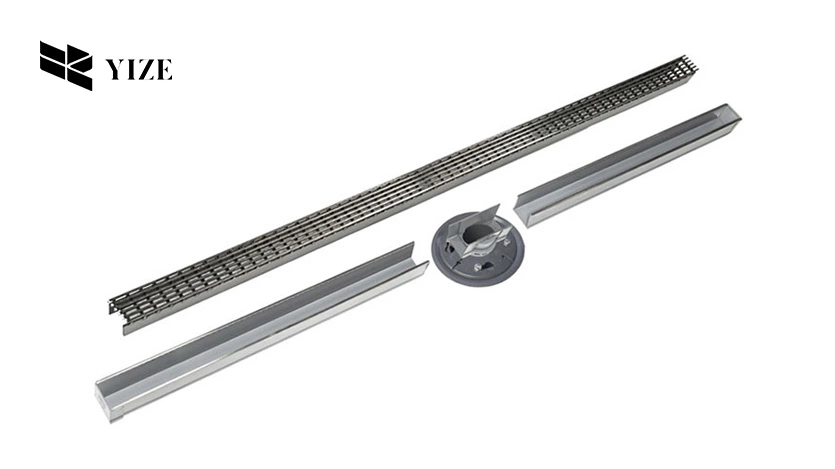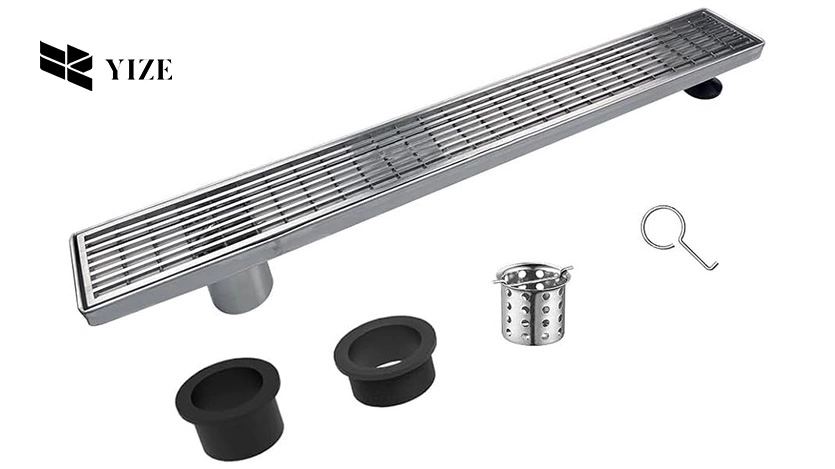
I. Introduction
Shower drains are an essential feature of contemporary bathrooms that ensure water is drained adequately in a shower area. While traditional shower drains have been adequate for all these years, the shift to adjustable linear shower drains has been gaining momentum. These modern drains blend beauty, functionality, flexibility, and easy installation characteristics.
This article will go over what adjustable linear drains are, their advantages, and how they might simplify shower construction. We will also tour the installation process and go over typical problems that experts and homeowners may address with these creative drains.
II. Understanding Adjustable Linear Drains
Modern showers use an adjustable linear shower drain—a long, narrow drain. Unlike conventional round or square center drains, linear drains create a sleek, understated appearance running along one side or wall of the shower. The “adjustable” feature of the drain makes them more flexible for many designs since it allows one to alter them for varying floor slopes and shower sizes.
An adjustable linear shower drain’s design lets installation be flexible. Built to be put on a single slope, they send water toward the drain from every area of the shower floor. It helps to achieve what is, essentially, efficient water drainage so that water pooling is minimised and potential water damage eliminated.
III. The Benefits of Adjustable Linear Drains
1. Aesthetic Appeal and Modern Design
The contemporary design of adjustable linear shower drains is definitely one of the most valuable features; however, let’s take a closer look.
- Sleek Appearance: Often located at the shower’s edge, these drains virtually go invisible when combined with large-format tiles.
- Minimalist Look: Their narrow and long-form fits the shower floor perfectly and presents a sleek, understated appearance.
Design flexibility lets them function with many tile designs, particularly big tiles that might normally need cutting around a central drain.
2. Easy Installation
Adjustable linear shower drains provide a few installation advantages over conventional drains.
- Adaptable to Various Shower Sizes: Customizable drains allow one to match different shower floor measurements, thereby providing a perfect fit even in unusual designs.
- Simplified Sloping: Unlike conventional drains, which can call for several slopes to guide water to the center, linear drains operate on a single slope, therefore facilitating installation by simplicity.
- Reduced Tile Cutting: Cutting of tiles around a drain is less complex in this case given that the drain goes down one side of the shower. In addition to efficiency this leads to a less messy, neater look.
3. Improved Drainage Efficiency
What perhaps can hardly be defeated by linear drains is proper drainage of water from the shower area.
- Faster Drainage: Linear form combined with the concept of a faster water drainage minimized the risk of puddles or standing water inside spaces.
- Consistent Flow: Water is directed in a straight line in the manner that all the water from different part of the shower goes straight to the drain; hence free from blockages.
- Slope the Floor: While conventional drains call for several slopes, linear drains just need one slope toward the drain. One can accomplish this with either a pre-sloped shower base or a specialized mortar.
IV. Installing the Drain

Install the drain using these guidelines after the shower floor is ready:
- Position the Drain: Choose the position for your changeable linear drain. Position the Drain: Depending on your taste in design, it can be positioned along the rear wall or one edge of the shower.
- Connect the Drain to the Plumbing: Attach the Drain to the Plumbing Make the plumbing outlet of the drain connected to the current drainage system. If you doubt the connections, this stage could call for a professional plumber.
- Set the Drain in Place: Install the drain unit making sure it is level. Make sure the drain is placed at the right height and slope to guarantee appropriate water drainage as it is movable.
- Secure the Drain: Depending on the drain model, fasten the drain to the floor using screws or clips following positioning.
- Tile Around the Drain: Tiling the shower floor around the drain once it is fixed is next. The design of the linear drain lets one install big tiles without requiring cuts around the drain with ease.
Final Steps
- Examine the Drain. Run water through the shower once installed to evaluate the drainage effectiveness and guarantee leaks are free.
- Apply silicone sealant around the drain’s borders to stop water from seeping under it.
V. Common Installation Challenges Solved

Although installable with adjustable linear shower drains is simpler than with conventional drains, several typical problems can still exist. The following fixes these problems:
1. Uneven Slopes
- One of the most often occurring problems during installation is making the right slope toward the drain. An overly steep or too shallow slope could cause water to pool in some shower sections.
- Solution: Create a constant and proper slope toward the drain using a pre-sloped shower base or a sloping mortar mix. Through their flexibility during installation, adjustable linear drains help to solve this issue.
2. Incorrect Drain Placement
- Where to locate the linear drain presents still another difficulty. Should it be positioned wrongly, water might not flow towards the drain as intended.
- The shower floor should be thoroughly measured, and the drain should be placed under advance planning. By allowing you put them along one wall or the shower entrance, adjustable linear drains provide placement flexibility and help to lower the danger of incorrect positioning.
3. Plumbing Connections
- Sometimes connecting the drain to the current plumbing system can be challenging, particularly in older bathrooms with antiquated layouts.
- Professional plumbers are advised if you are not sure how to link the drain to your plumbing. They can guarantee a strong and up to code connection.
VI. Conclusion
Modern solutions combining design and functionality are adjustable linear shower drains. Along with useful advantages like simple installation, effective drainage, and design versatility, they give your shower a sleek, modern appeal. Adjustable linear drains are fast becoming a preferred choice for both homeowners and professionals alike because they allow one to personalize the installation and fit different shower sizes and layouts.
For a neat, effective, and hassle-free installation whether you intend to construct a new shower or modify your bathroom, think about selecting an adjustable linear shower drain.
Frequently Asked Questions (FAQs)
1. How do adjustable linear drains differ from traditional drains?
Running either one side or wall of the shower, adjustable linear drains are long and narrow. Unlike conventional drains, which are usually circular or square and positioned in the middle, linear drains have a sleek, modern style and more effective water drainage.
2. Are adjustable linear drains difficult to install?
No, especially in relation to conventional drains, adjustable linear drains are really easy to install. They provide flexibility in placement and just a single slope toward the drain, therefore lowering the demand for tile cutting.
3. Can adjustable linear drains be installed in any shower size?
Indeed, adjustable linear drains are flexible and ideal for both small and large shower areas since they can be tailored to suit different shower diameters and layouts.
4. Do adjustable linear drains need maintenance?
Like other shower drains, linear drains call for sporadic cleaning to avoid blocking. Still, their design lets you clean them more easily than with conventional center drains.
5. Are adjustable linear drains more expensive than traditional drains?
Although their modern style, efficiency, and simplicity of installation typically make them a worthy investment, generally, adjustable linear drains are more expensive than conventional drains.
